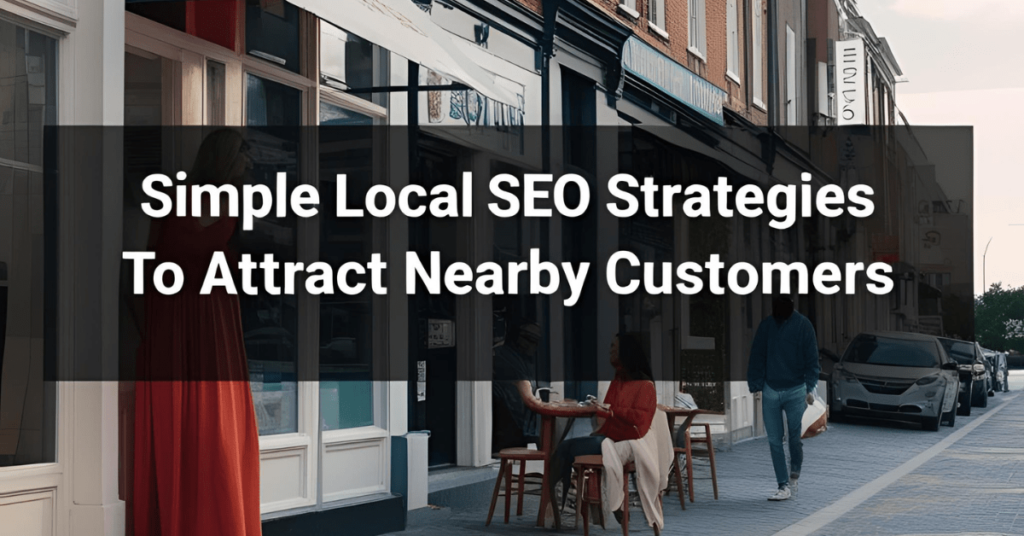Even the most charming brick-and-mortar businesses can struggle to thrive without a strong online presence. While national SEO focuses on broad reach, local SEO zeroes in on attracting customers in your immediate vicinity. This targeted approach is crucial for small businesses aiming to capture the attention of those who are most likely to convert: your neighbors.
Here’s a breakdown of simple yet effective local SEO strategies to bring nearby customers to your doorstep:
Claim and Optimize Your Google Business Profile
Your GBP is the cornerstone of your local SEO efforts. It’s the first impression many potential customers will have of your business.
- Claim Your Profile: If you haven’t already, claim your GBP. This verifies your ownership and allows you to manage your information.
- Complete and Accurate Information: Ensure your business name, address, phone number (NAP), website, and hours are consistent and accurate across all online platforms.
- Categorize Correctly: Choose the most relevant primary and secondary categories for your business.
- Add High-Quality Photos and Videos: Visuals are crucial. Showcase your products, services, and the atmosphere of your business.
- Write a Compelling Business Description: Use relevant keywords and highlight what makes your business unique.
- Encourage Reviews: Positive reviews build trust and credibility. Actively encourage satisfied customers to leave reviews on your GBP.
Focus on Local Keywords
Understanding how your local customers search is essential.
- Keyword Research: Identify keywords that include your city or neighborhood, along with your products or services (e.g., “coffee shop downtown [city name]”).
- Use Long-Tail Keywords: These are more specific phrases that target customers with clear intent (e.g., “best vegan bakery near me”).
- Incorporate Keywords Naturally: Integrate these keywords into your website content, GBP description, and online listings
Build Local Citations
Citations are online mentions of your business’s NAP. Consistent citations across various platforms enhance your local SEO.
- NAP Consistency: Ensure your NAP is identical on your website, GBP, and all online directories.
- Major Directories: List your business on prominent directories like Yelp, Bing Places, Apple Maps, and industry-specific directories.
- Monitor and Update Citations: Regularly check your citations for accuracy and update any outdated information.
Optimize Your Website for Local Search
Your website should be a valuable resource for local customers.
- Local Landing Pages: Create dedicated landing pages for each location if you have multiple branches.
- NAP on Website Footer: Display your NAP prominently on every page of your website.
- Embed a Google Map: Make it easy for customers to find your location.
- Mobile-Friendly Design: Ensure your website is responsive and easy to navigate on mobile devices.
- Local Content: Create blog posts or articles about local events, attractions, or community news.
Engage on Social Media
Social media is a powerful tool for connecting with local customers.
- Create Local Content: Share posts about local events, promotions, and customer spotlights.
- Run Local Targeted Ads: Use social media advertising to reach specific demographics in your area.
- Respond to Comments and Messages: Engage with your audience and build relationships.
Use Location-Based Hashtags: Increase your visibility by using relevant local hashtags.
Monitor and Analyze Your Results
Regularly track your local SEO performance to identify areas for improvement.
- Google Analytics and Google Search Console: Use these tools to monitor website traffic, keyword rankings, and user behavior.
- GBP Insights: Analyze your GBP data to understand how customers are finding your business.
- Track Your Citations: Monitor your citations for accuracy and consistency.
Conclusion
By implementing these simple local SEO strategies, you can significantly improve your visibility in local search results and attract more nearby customers to your business. Consistent effort and a focus on providing a positive customer experience will ultimately drive long-term success.
